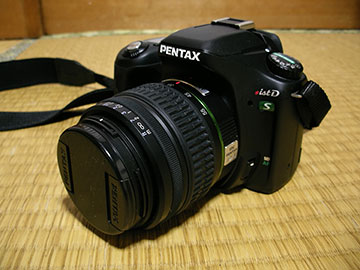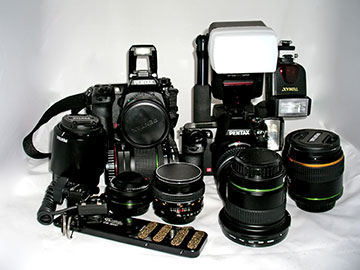If you are interested in tools that are more advanced and flexible compared to a fixed-lens digicam, your next option will probably be DSLR cameras. Cheaper DSLR cameras usually come with what is called a “kit lens.” This lens is often a zoom lens with a focal length range of around 18mm – 55mm. The major negative of a kit lens is that it generally is not able to take in as much light because it has a smaller maximum aperture throughout the zoom range of say f4 in the wide end to f5.6 in the telephoto end, whereas a better lens might be able to have a wider aperture of f2.8 throughout the whole zoom range. There also might be a few other negatives like lower absolute sharpness, more distortion, or more chromatic aberrations than compared to higher-end lenses.

The jump from a kit lens to higher-end lens is considerable when comparing cost. While a kit lens might cost $100 – $200, a equivalent pro level lens could be from $500 – $1500. While those prices might sound insane now, once you catch the lens buying bug, it’s a hard habit to stop and easy to justify such high costs.
There is nothing wrong starting out with a basic kit lens. You could even opt to never buy another lens for your camera and still be able to produce nice, yet most likely average images. If you have the cash, I would suggest a zoom lens in the standard zoom range that has a constant f2.8 aperture to get started. This will allow you some benefits such as the ability to produce a higher degree of background blur behind your subject, and a moderate improvement is overall quality throughout the zoom and aperture range.
A lens like that will also most likely have a larger range of higher sharpness thanks to higher quality glass and a larger initial maximum aperture, which allows the sweet-spot to increase. Buying a lens that starts at f2.8 will have a higher probability of being sharp at f3.5 than a lens which starts at f3.5. Just keep in mind that there are exceptions to any loose rules, so do your research on the specific lens you are interested in.
Most of the entry and mid-level cameras bodies these days are similar enough that it does not matter which brand you purchase from a quality standpoint. Look at the lenses offered for each brand to get a better feel of which might best suit your needs.
For example, Canon is best known for their high-end “L” zoom lenses and lower cost primes, whereas Pentax is best known for their all-metal “Limited” prime fixed-focal-length lenses and lower cost weather resistant lenses. A lot can be said for ergonomics, so if you can hold and try out a camera from each brand, that would better help you find a body that best fits your style of camera control.
To go along with the camera body, you should consider a “battery grip” that allows you to taking pictures longer before needing to switch batteries. The secondary, and more important reason, is that most battery grip designs allow you to hold the camera vertically with the inclusion of a secondary shutter release button. In a convention situation it is often in your best interest to shoot images vertically so that you can fit the whole person in your frame.
Besides camera body and lens, you should also consider a quality add-on external strobe flash. It attaches to the “hot-shoe” of your camera body to provide a more powerful and customizable flash of light compared to the built-in pop-up flash. Nikon is said to have an exceptional flash system, which should be considered when buying into a camera system as talked about before with lenses. Flash photography is a whole subset of technique and tools. I’ll be going over aspects of that later in the book.

- Overview
- Who is this for?
- What is convention photography?
- My experience and experiences
- Why be a part of this?
- Practice, practice, practice!
- Networking
- Fun
- Photography terms primer.
- Equipment
- It is important or not depending on your ideals
- A basic setup.
- Decide how you want to make it work.
- Framing and composition
- Full body shots.
- Portrait style.
- Skewed angles.
- Face in detail.
- Plane of focus.
- Rule of thirds and golden ratio
- Available light photography.
- Strobe photography.
- Removing harsh light.
- Flash brackets.
- Bokeh and blur maximization.
- Histogram reading and image review.
- Post processing.
- Various schools of thought.
- Available software on your OS of choice.
- Ideas on how to improve your processing.
- Business cards.
- Social networking.
- Website
- The process from start to finish.
- My equipment.
- Ask the person first.
- Interrupting people.
- Constrained areas.
- Physical activity.
- Summary
